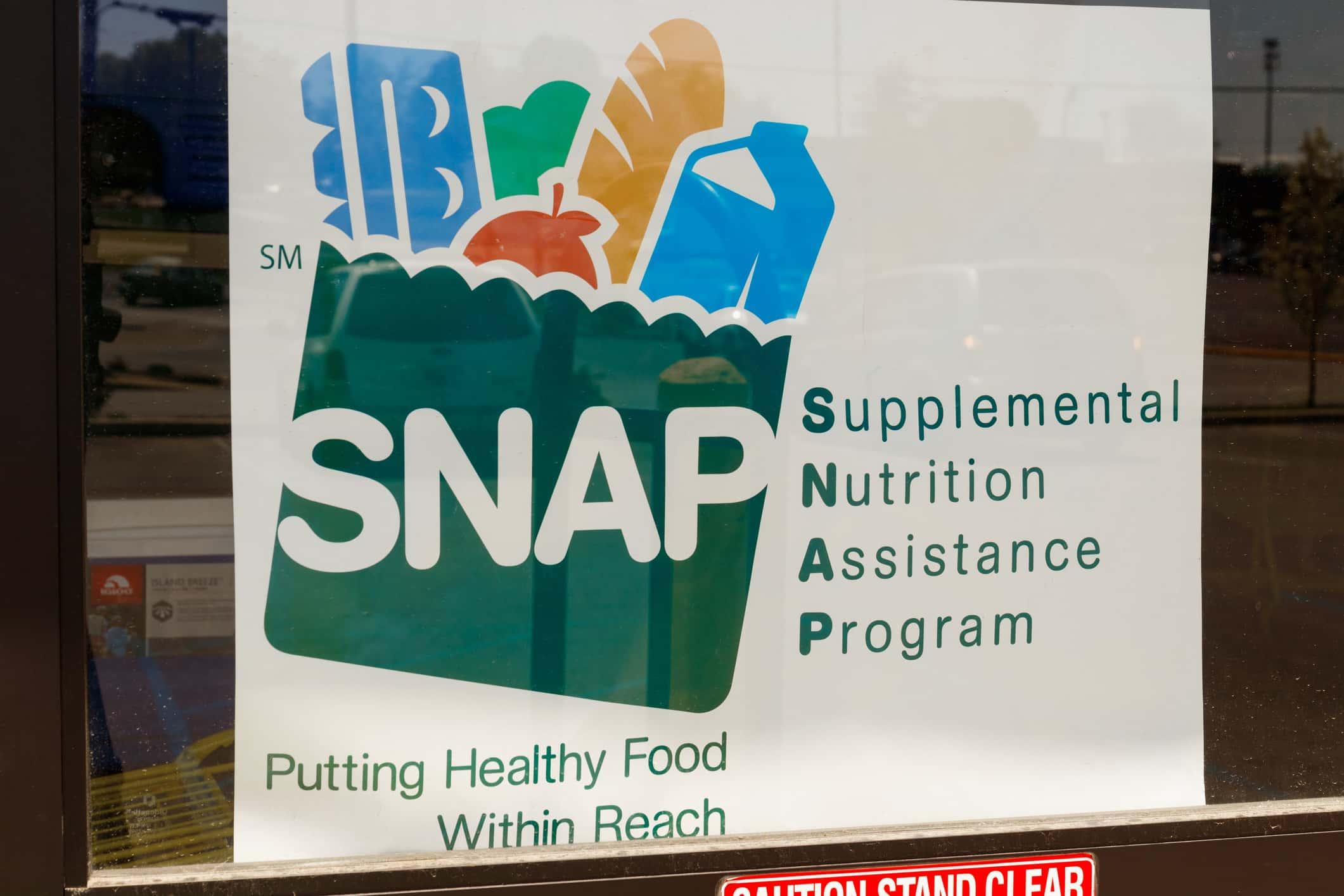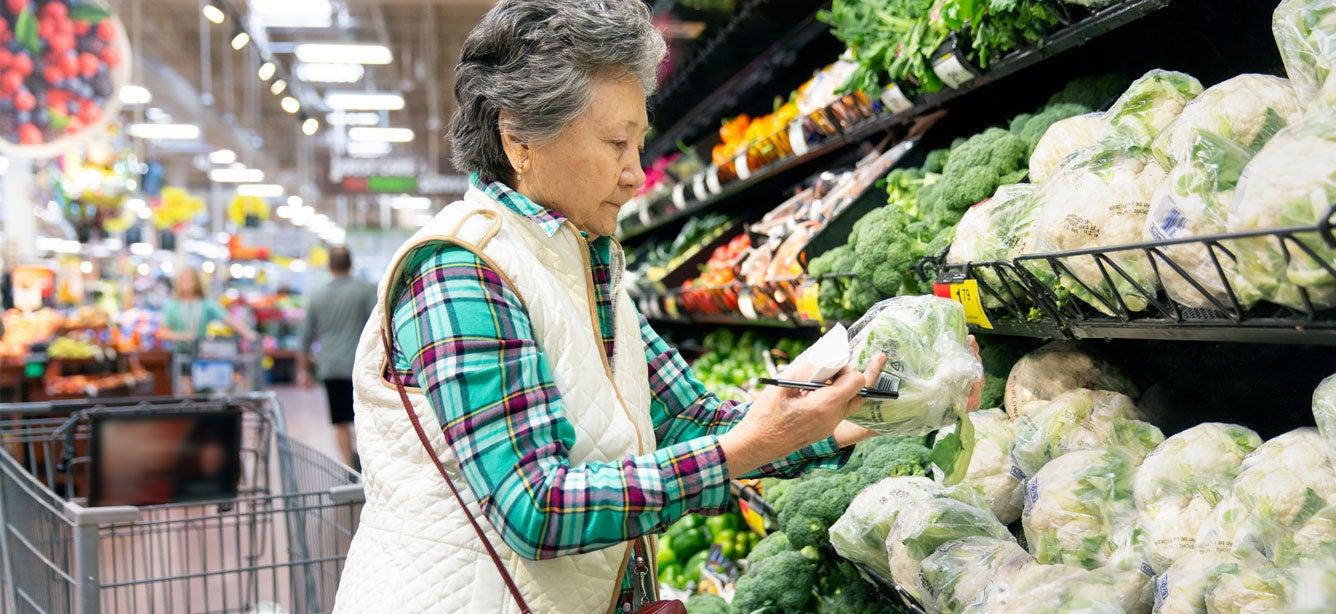
When you’re juggling the costs of housing, medical bills, and prescriptions, there’s often not much left over for groceries. That’s where the Supplemental Nutrition Assistance Program—formerly known as food stamps—can make a big difference. It helps millions of Americans afford healthy, nutritious food. But here’s the problem: too few older adults are using it. In fact, only about half of those age 60+ who qualify for SNAP are actually enrolled.1
What is the Supplemental Nutrition Assistance Program (SNAP)?
SNAP is a public food assistance program that helps individuals and families buy the food they need to maintain good health, providing monthly financial aid to an estimated 7.8 million older adults.2 SNAP benefits help older adults maintain their independence and for some, can mean the difference between going hungry and enjoying nourishing meals without worry.
5 Myths Debunked About SNAP
There are several misconceptions that may keep older adults from taking advantage of SNAP benefits. Below are the five most common myths about SNAP—along with the hard facts that debunk these myths.
Myth 1
❌ Myth: SNAP is only for families with children.
✅ Fact: SNAP is for everyone.
SNAP is open to all eligible households, including those with older adults. The benefit is especially important since our nutritional needs change with age. Regular access to healthy food helps older adults prevent and manage chronic conditions, improve their resistance to illness, maintain strong bones, and lower their falls risk. Having SNAP benefits also frees up extra money for prescriptions, health care costs, and other expenses that improve your health. One study found that SNAP participation may help older adults with diabetes stick to their treatment regimens.3
What can SNAP benefits be used for? Replacing less expensive “junk” foods and processed foods with the following healthier options:4
- Fruits
- Vegetables
- Meat
- Poultry
- Fish
- Milk
- Yogurt
- Bread
You can also use SNAP benefits to buy seeds and plants to grow food for your household.5
Myth 2
❌ Myth: SNAP is not worth applying for because it only offers $23 a month in benefits.
✅ Fact: The average SNAP benefit for an older adult living alone is $188 per month.6
The $23 monthly SNAP benefit figure that's often discussed only represents the minimum monthly benefit you can receive. Approximately 80% of older adults receive more than that amount. And there are still many ways to stretch your dollar to get the most out of a minimum benefit.7
In addition, SNAP benefits don’t need to be used the same month they’re obtained. You can let your benefits accrue for a certain period and add up to a higher amount over time.8
Finally, if you spend more than $35 a month on out-of-pocket medical costs, you may be able to deduct that from your gross income when applying for SNAP.9 This deduction can result in a higher monthly benefit payment.
Myth 3
❌ Myth: Applying for SNAP assistance will take food benefits away from others who need it.
✅ Fact: An older adult who receives SNAP assistance is not taking food or money away from other households.
Everyone who is eligible for SNAP and enrolls in the program will receive help. There are various age ranges in SNAP participation, including children (represented 40% of all SNAP participants in FY2022), adults age 18-59 (represented 42%), and those age 60 and older (18%).2 The most alarming number is that nearly 9 million older adults are eligible for SNAP but aren't enrolled, according to recent NCOA data.
Myth 4
❌ Myth: Not many stores accept SNAP.
✅ Fact: There are approximately 262,000 food retailers nationwide that participate in SNAP.10
You’ll likely find plenty of places nearby where you can use your benefits in person or for online delivery. Your SNAP electronic benefits transfer card, or simply your EBT card, can be used in most grocery stores and other retail stores that sell food, including convenience stores. Many farmers markets across the country also accept SNAP.
Using your SNAP dollars is easy. Each month, your benefits are loaded onto your EBT card that you swipe at checkout just like a credit or debit card. As long as you have enough money in your EBT card balance, you can use it to cover eligible grocery purchases.
Myth 5
❌ Myth: Applying for SNAP is too difficult.
✅ Fact: It’s not as hard as you might think—and you can get help with signing up.
Depending on the state you’re in, you may apply for SNAP online, by mail, or in person. You’ll be asked for some basic information such as:
- The size of your household
- Your annual income
- Any assets you have (e.g., cash, property, etc.)
Not to worry, any personal information you provide is strictly confidential.
It can take up to 30 days to process your SNAP application.11 In some cases, your local SNAP office may contact you to ask you additional questions before they make a final decision regarding benefits. If you qualify, you’ll receive an approval letter that explains your benefit amount, when your benefits will begin, and how long your monthly SNAP benefits will last.
Learning more about SNAP in your state and finding out about your eligibility can be done using NCOA’s online screening tool. Just visit BenefitsCheckUp.org and enter your ZIP code. If you are eligible, we’ll tell you how to apply for SNAP on your own or you can get in touch with someone at an NCOA-supported Benefits Enrollment Center.
How can I get help applying for SNAP?
You have nothing to lose by checking your SNAP eligibility. Just ask Tom, age 60. After losing his self-employment income following COVID-19 pandemic shutdowns, Tom faced uncertainty. Although he'd heard of SNAP, he thought the application process would be too complicated. A local Benefits Enrollment Center helped Tom complete his application, and he was approved for benefits.
"I can now grocery shop for the healthy foods I want," he told NCOA.
Download (and share) the PDF infographic below for some fast facts about SNAP and how it can benefit you.
Sources
1. USDA. Trends in Supplemental Nutrition Assistance Program Participation Rates: Fiscal Year 2020 and Fiscal Year 2022. Found on the Internet at https://fns-prod.azureedge.us/sites/default/files/resource-files/ops-snap-trendsfy20-fy22-report.pdf
2. USDA. Supplemental Nutrition Assistance Program (SNAP) - Key Statistics and Research. July 24, 2025. Found on the internet at https://www.ers.usda.gov/topics/food-nutrition-assistance/supplemental-nutrition-assistance-program-snap/key-statistics-and-research
3. JAMA Internal Medicine. Association Between Supplemental Nutrition Assistance Program Participation and Cost-Related Medication Nonadherence Among Older Adults With Diabetes. January 2019. Found on the Internet at https://jamanetwork.com/journals/jamainternalmedicine/fullarticle/2715159
4. USDA Food and Nutrition Service. What Can SNAP Buy? Found on the Internet at https://www.fns.usda.gov/snap/eligible-food-items.
5. USDA. Using SNAP Benefits to Grow Your Own Food. July 6, 2011. Found on the Internet at https://www.usda.gov/about-usda/news/blog/2011/07/06/using-snap-benefits-grow-your-own-food
6. USDA. Characteristics of Supplemental Nutrition Assistance Program Households: Fiscal Year 2023. April 2025. Found on the internet at https://fns-prod.azureedge.us/sites/default/files/resource-files/snap-FY23-Characteristics-Report.pdf
7. National Council on Aging. Eating Better on a Fixed Income: What You Can Buy for $23 in SNAP Benefits. January 25, 2024. Found on the Internet at https://www.ncoa.org/article/eating-better-on-a-fixed-income-what-you-can-buy-with-snap-benefits/
8. Ask.USDA.Gov. Does a balance on my Electronic benefit transfer card carryover to the next month? Found on the Internet at https://ask.usda.gov/s/article/Does-a-balance-on-my-Electronic-benefit-transfer-card-carryover-to-the-next-month
9. USDA Food and Nutrition Service. A Guide to the Treatment of Medical Expenses for Elderly or Disabled Household Members. Found on the Internet at https://fns-prod.azureedge.us/sites/default/files/resource-files/snap-medical-expenses-handbook.pd
10. USDA Food and Nutrition Service. SNAP Retailer Management Year End Summary FY 2023. Found on the Internet at https://www.fns.usda.gov/data-research/data-visualization/snap-retailer-management-dashboard
11. USDA Food and Nutrition Service. SNAP Eligibility. Found on the Internet at https://www.fns.usda.gov/snap/recipient/eligibility



